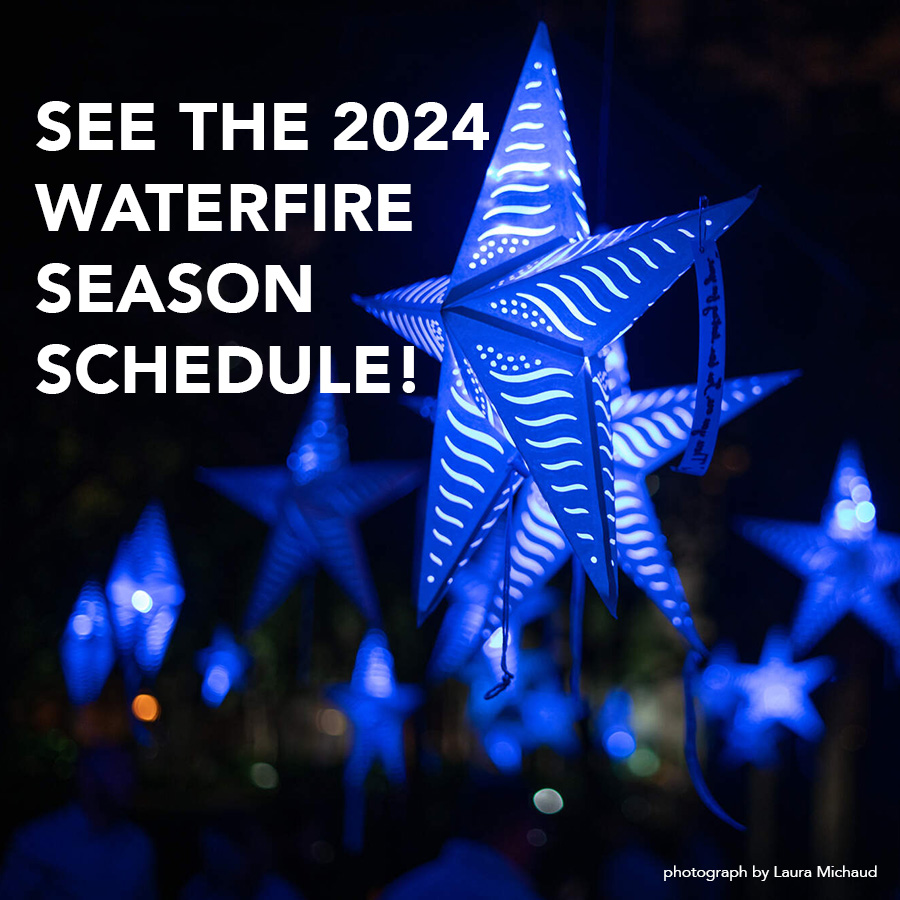WaterFire draws upon the classic elements of earth, wind, fire and water in a manner that would be well understood by ancient civilizations, but, quite ironically, this sculptural installation has become the symbol, in fact, the “logo” of the city of Providence. It is now almost impossible to read an article about the city, whether from within or without its borders, that is not accompanied by one or more images of the blazing braziers.
The irony comes from the fact that WaterFire as an art piece was originally conceived to be a contemplative work that would enable viewers, or, more accurately, participants to reflect, to go backward or forward in time, to establish a relationship with this extraordinary installation that was private in the midst of a public setting. The music, which is so carefully chosen or commissioned by Barnaby Evans, enhances this effect.
The enormous success of WaterFire has created a situation which is both enviable and potentially agonizing. No one involved with WaterFire predicted that upwards of 35,000 people would attend a single performance — enviable numbers for any public presentation. At the same time, what is the magic number above which the ability of anyone to enter a contemplative state is significantly jeopardized? One of the many miraculous things about WaterFire is the fact that we can’t yet answer this question. Viewers continue to note their sense of “shared intimacy.” What an extraordinary commentary this is on the power of the work — that it is possible for an individual to be transported within a crowd of 35,000.
This transmutation of the private into the public and vice versa is very rare indeed. If we think of artists from the past who are renowned for their ability to create spectacle — Inigo Jones during the Elizabethan and Jacobean periods and the original designers of the eighteenth-century Venetian water festivals are good examples — the spectacle always emphasized, or indeed, promoted the public aspect of the presentation. Glorification of the ruler, the church, the state or the commune/community was paramount. WaterFire is thus remarkable in its transcendence, in its ability to encompass the public and the private without compromise. It is a tribute to Barnaby Evans as creator and to its audiences as participants that WaterFire has flourished in its precious duality.
Diana L. Johnson, Vice President, Fleet Bank; former Curator and Chief Curator, Museum of Art, Rhode Island School of Design and former Director, Bell Gallery, Brown University.









